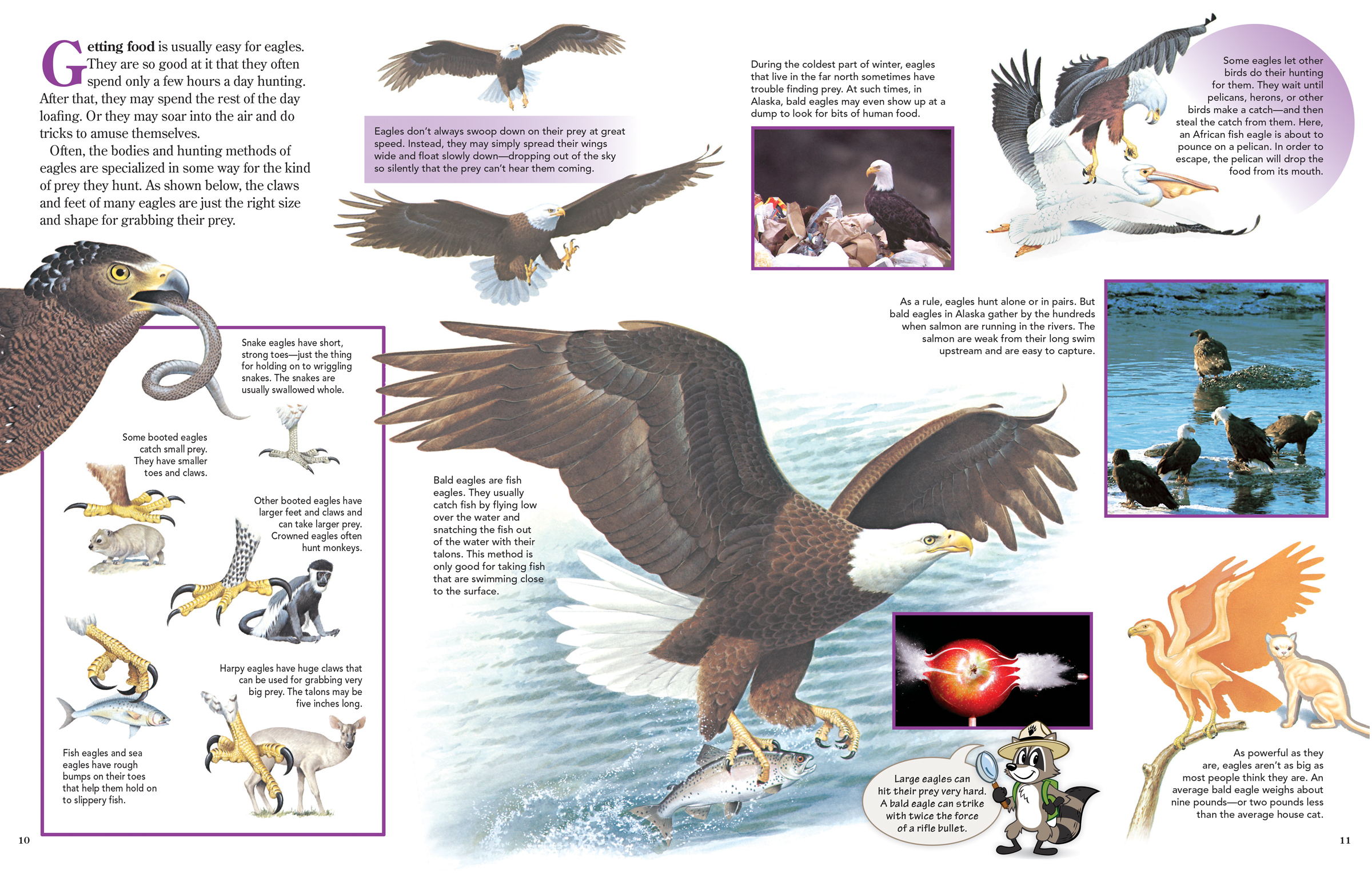
Grabbing Lunch is Usually Easy
ByGetting food is usually easy for eagles. They are so good at it that they often spend only a few hours a day hunting. After that, they may spend the rest of the day loafing. Or they may soar into the air and do tricks to amuse themselves.
Often, the bodies and hunting methods of eagles are specialized in some way for the kind of prey they hunt. As shown below, the claws and feet of many eagles are just the right size and shape for grabbing their prey.
Eagles don’t always swoop down on their prey at great speed. Instead, they may simply spread their wings wide and float slowly down—dropping out of the sky so silently that the prey can’t hear them coming.
Snake eagles have short, strong toes—just the thing for holding on to wriggling snakes. The snakes are usually swallowed whole.
 Some booted eagles catch small prey. They have smaller toes and claws.
Some booted eagles catch small prey. They have smaller toes and claws.
Other booted eagles have larger feet and claws and can take larger prey. Crowned eagles often hunt monkeys.
Harpy eagles have huge claws that can be used for grabbing very big prey. The talons may be five inches long.
Fish eagles and sea eagles have rough bumps on their toes that help them hold on to slippery fish.
Bald eagles are fish eagles. They usually catch fish by flying low over the water and snatching the fish out of the water with their talons. This method is only good for taking fish that are swimming close to the surface.
During the coldest part of winter, eagles that live in the far north sometimes have trouble finding prey. At such times, in Alaska, bald eagles may even show up at a dump to look for bits of human food.
Some eagles let other birds do their hunting for them. They wait until pelicans, herons, or other birds make a catch—and then steal the catch from them. Here, an African fish eagle is about to pounce on a pelican. In order to escape, the pelican will drop the food from its mouth.
As a rule, eagles hunt alone or in pairs. But bald eagles in Alaska gather by the hundreds when salmon are running in the rivers. The salmon are weak from their long swim upstream and are easy to capture.
Large eagles can hit their prey very hard. A bald eagle can strike with twice the force of a rifle bullet.
As powerful as they are, eagles aren’t as big as most people think they are. An average bald eagle weighs about nine pounds—or two pounds less than the average house cat.

